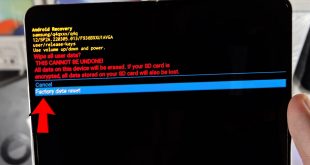
If your Samsung device is experiencing performance issues, experiencing frequent freezing, or displaying persistent errors, consider performing a hard reset. This comprehensive procedure will restore your device to its factory settings, eliminating any software bugs or corrupted files that may be causing problems.
Performing a hard reset is a straightforward process, and we’ll provide a detailed guide to ensure you can complete it confidently. Before proceeding, it’s crucial to back up your important data, as this process will erase all files and settings stored on your device. Once you’ve secured your backup, follow the steps below to restore your Samsung device to its pristine state.
How to Reset Samsung Galaxy A71 5G
Table of Contents
Resetting your Samsung Galaxy A71 5G can address a range of issues, such as performance lags, software malfunctions, or forgotten passwords. This comprehensive guide will provide step-by-step instructions to restore your device to factory settings.
Cautions Before Resetting

Performing a factory reset on your device has significant implications, so it’s crucial to exercise caution before proceeding. This section outlines potential consequences and provides recommendations to mitigate risks.
Soft Reset vs. Hard Reset
In order to fully understand the distinctions between soft and hard resets, it’s crucial to define these two terms and examine their unique characteristics and objectives.
A soft reset, often referred to as a reboot or soft restart, is a simple yet effective way to refresh a mobile device experiencing minor glitches or performance issues. This process involves simply turning the device off and back on, allowing it to reload its operating system and clear any temporary errors or cache. Soft resets do not erase any user data or personal settings, making them a safe and convenient option for addressing minor issues.
On the other hand, a hard reset, also known as a master reset or factory reset, is a significantly more drastic measure designed to restore a device to its original factory settings. This process involves wiping all user data, including apps, settings, and files, and reinstalling the original operating system. Hard resets are typically performed when a device is experiencing severe or persistent issues that cannot be resolved through other troubleshooting methods.
Key Distinctions:
- Purpose: Soft resets address minor issues, while hard resets are for severe problems.
- Data Loss: Soft resets do not erase data, while hard resets wipe all user data.
- Complexity: Soft resets are simple and can be performed by users, while hard resets typically require technical assistance.
Understanding these distinctions is crucial for making informed decisions when troubleshooting device issues. It is always advisable to attempt a soft reset before resorting to a hard reset to minimize the risk of data loss.
Steps for Hard Resetting
If you encounter any difficulties or glitches with your device, consider performing a hard reset. This drastic measure can effectively resolve a multitude of issues by restoring your device to its original factory settings. However, be aware that all personal data, including apps, contacts, and media, will be permanently erased in the process. Therefore, it’s imperative to back up your data before proceeding.
Using the Recovery Menu
To execute a factory reset via the Recovery Menu, follow these detailed instructions:
| Steps | Instructions |
|---|---|
| Step 1: Access Recovery Menu | Simultaneously press and hold the Volume Up, Power, and Bixby keys. |
| Step 2: Navigate Recovery Menu | Use the Volume keys to navigate through the options and the Power key to select. |
| Step 3: Wipe Data/Factory Reset | Scroll down to “Wipe data/factory reset” and press the Power key. |
| Step 4: Confirm Reset | Select “Factory data reset” and confirm your choice by pressing the Power key. |
| Step 5: Complete Reset | Wait for the reset process to finish, then select “Reboot system now” to restart your device. |
Alternative Reset Options

In certain scenarios, the hard reset procedure described above may not be feasible. For such circumstances, explore alternative reset options designed to address specific situations, ensuring the optimal restoration of your Samsung Galaxy A71 5G.
Q&A:,
What is a hard reset?
A hard reset, also known as a factory reset, is a procedure that erases all data from your Samsung Galaxy A71 5G, including apps, settings, and personal files. It restores the device to its original factory state.
When should I perform a hard reset?
You should consider performing a hard reset if your device is experiencing severe issues, such as freezing, crashing, or refusing to turn on. It can also be useful if you want to sell or give away your device and want to remove all your personal information.
Will a hard reset delete my data?
Yes, a hard reset will erase all data from your device, including apps, settings, photos, music, and other files. It is important to back up your data before performing a hard reset.
How can I back up my data before performing a hard reset?
There are several ways to back up your data before performing a hard reset. You can use Samsung Cloud, Google Drive, or a third-party backup app to create a backup of your data. You can also transfer your data to a computer using a USB cable.
 New mods for android everyday
New mods for android everyday



